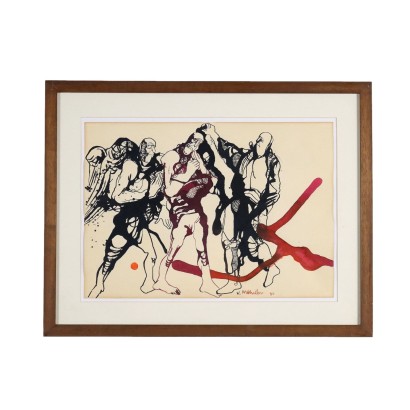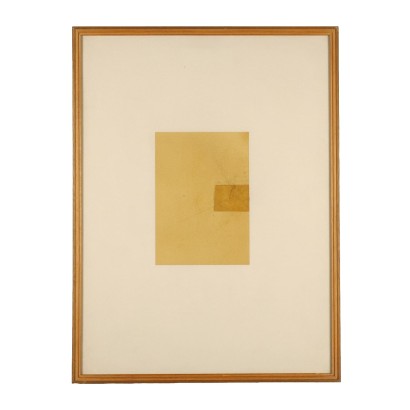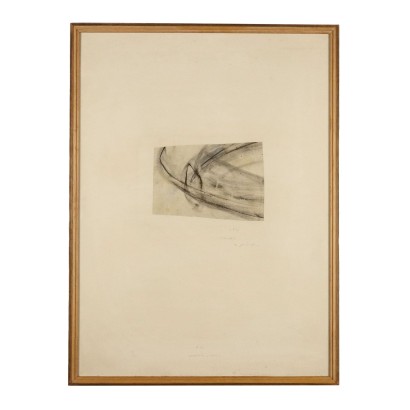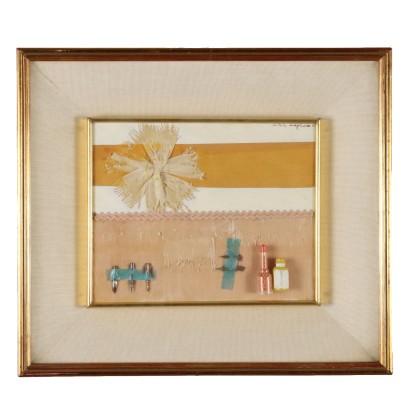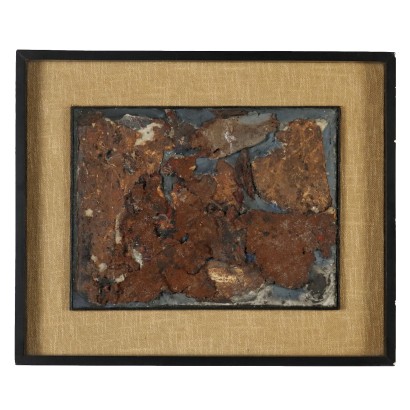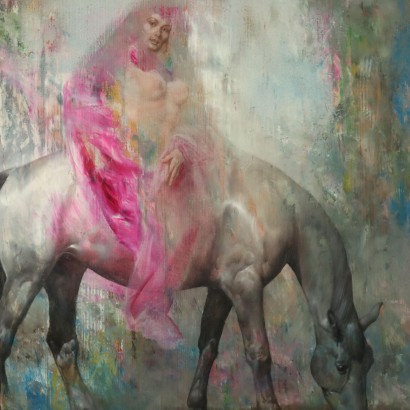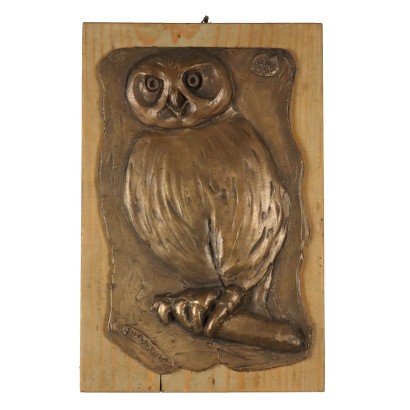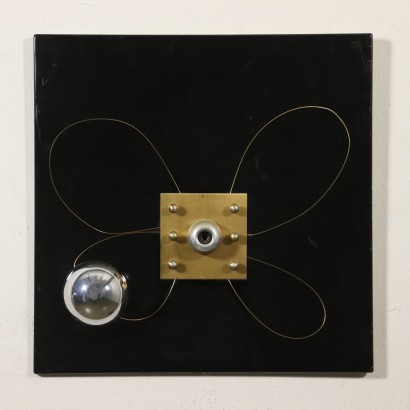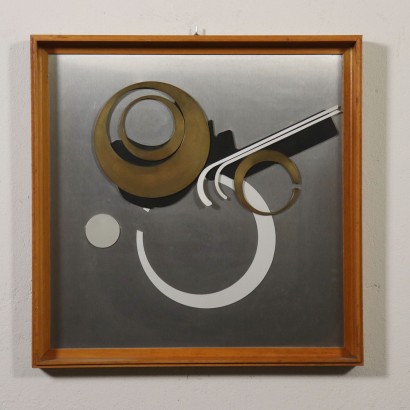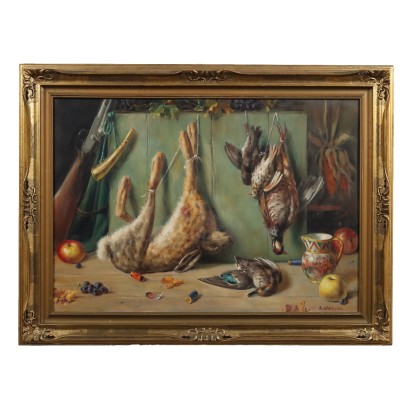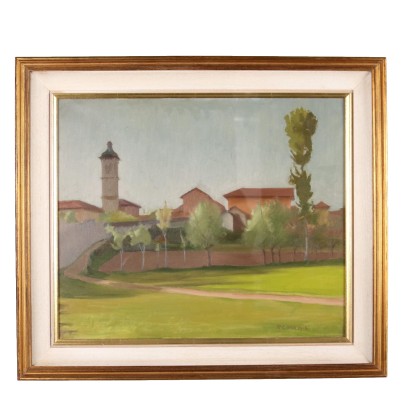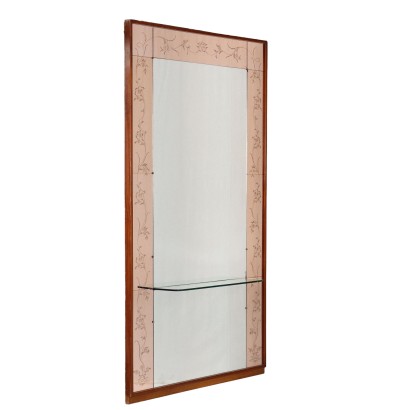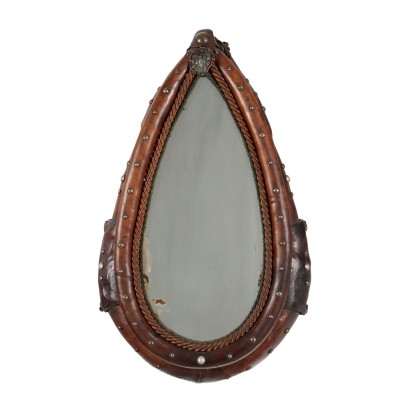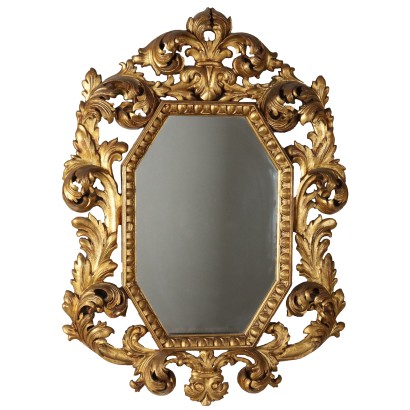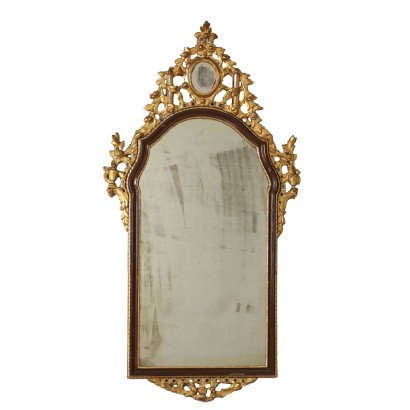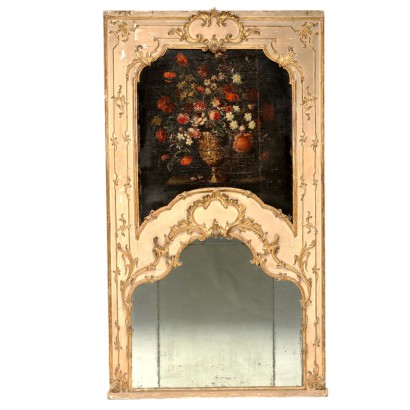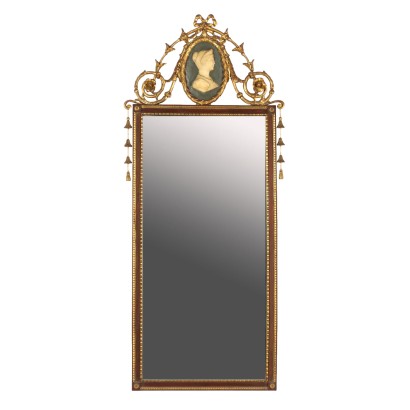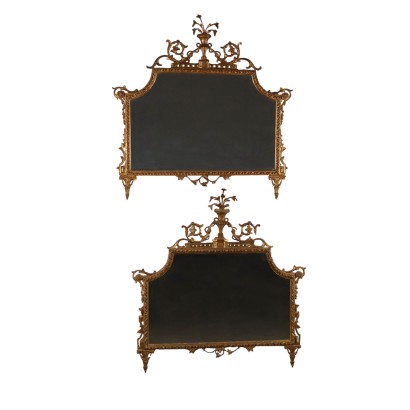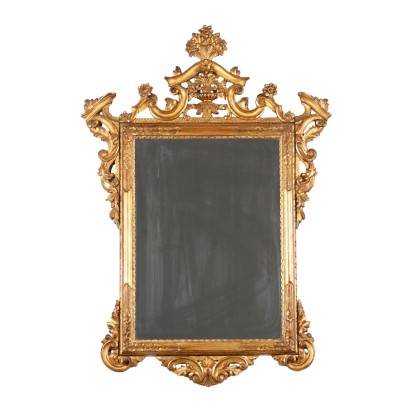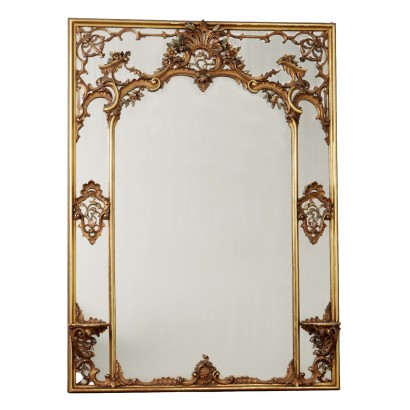Vyacheslav Sawich Mikhailov Ink on Paper Russia 1990 - Untitled 1990
Features
Untitled 1990
Artist: Vyacheslav Sawich Mikhailov (1945)
Artwork title: Senza titolo
Age: Contemporary
Subject: Human Figures
Origin: Russia
Artistic technique: Drawing
Technical specification: Ink
Description : Senza titolo
Ink on paper. Signed and dated lower right. The works of the Russian artist Vyacheslav Sawich Mikhailov are exhibited in prestigious museums such as the Tretyakov Gallery or the Museum of Modern Art in Moscow, the National Museum of Russian Art, the Museum of Nonconformist Art in St. Petersburg. Considered an expressionist author, he creates scenes of intense drama with different techniques. The design proposed here is part of a series of scenes full of dramatically intertwined figures in contortions of the body, with allegorical elements and patches of often red to evoke blood. In frame.
Product Condition:
Product in good condition, with small signs of wear.
Frame Size (cm):
Height: 43
Width: 55
Depth: 2
Artwork dimensions (cm):
Height: 30
Width: 41
Additional Information
Artist: Vyacheslav Sawich Mikhailov (1945)
Born in a small Russian village, he studied art in Leningrad. In 1979, together with Valery Lukka and Felix Volosenkov, he founded the artistic group later called by critics "The Three Bogatyrs", which dedicated itself to the search for new ways of pictorial expression. The works of the Russian artist are exhibited in prestigious museums such as the Tretyakov Gallery or the Museum of Modern Art in Moscow, the National Museum of Russian Art, the Museum of Nonconformist Art in St. Petersburg. Considered an expressionist author, he creates scenes of intense drama with different techniques.Age: Contemporary
ContemporarySubject: Human Figures
Artistic technique: Drawing
Il disegno è il processo di tracciare segni su una superficie tramite l'applicazione di una pressione o il trascinamento di un apposito strumento sulla superficie. Gli strumenti sono: matite in grafite o colorate, penna, pennelli fini con inchiostro, pastelli a cera o carboncini; i supporti tradizionali più frequenti sono carta, cartoncino, tavola, muro, tela, rame, vetro.Technical specification: Ink
Other customers have searched:
Arte Contemporanea, tecnica mista, composizione astratta, arte novecento, arte contemporanea, arte astratta, pittori italiani quadri olio su tela paesaggi..
Se sei un appassionato d'arte, non perderti i nostri approfondimenti sul Blog Arte Di Mano in Mano e su FineArt by Di Mano in Mano - Arte:
Ecco alcuni tra i principali articoli:
Vedute
Falsi nell'arte antica
Un messaggio di fiducia per ripartire
La potenza espressiva dell'arte figurativa etiope
Breve Storia del Collezionismo
Giorgio Upiglio, maestro dei libri d'artista
Matthias Withoos detto "Calzetta bianca"
San Rocco pensaci tu - Classic Monday
Sapevi che l'arte può essere anche un ottimo investimento (e non solo per grandi portafogli)?
L'Arte tra Collezionismo e Investimento
FineArt: Arte come investimento
Dai un'occhiata alle nostre rubriche di divulgazione sull'arte:
Epoche
Lavorazioni e tecniche
Mostre ed Eventi
Protagonisti
Product availability
The product can be seen at Cambiago
Disponibilità immediata
Pronto per la consegna in 2 giorni lavorativi dalla conferma dell'ordine del prodotto.
Consegna tra i 7 e i 15 giorni in tutta Italia. Per le isole e le zone difficilmente raggiungibili i tempi di consegna possono variare.



